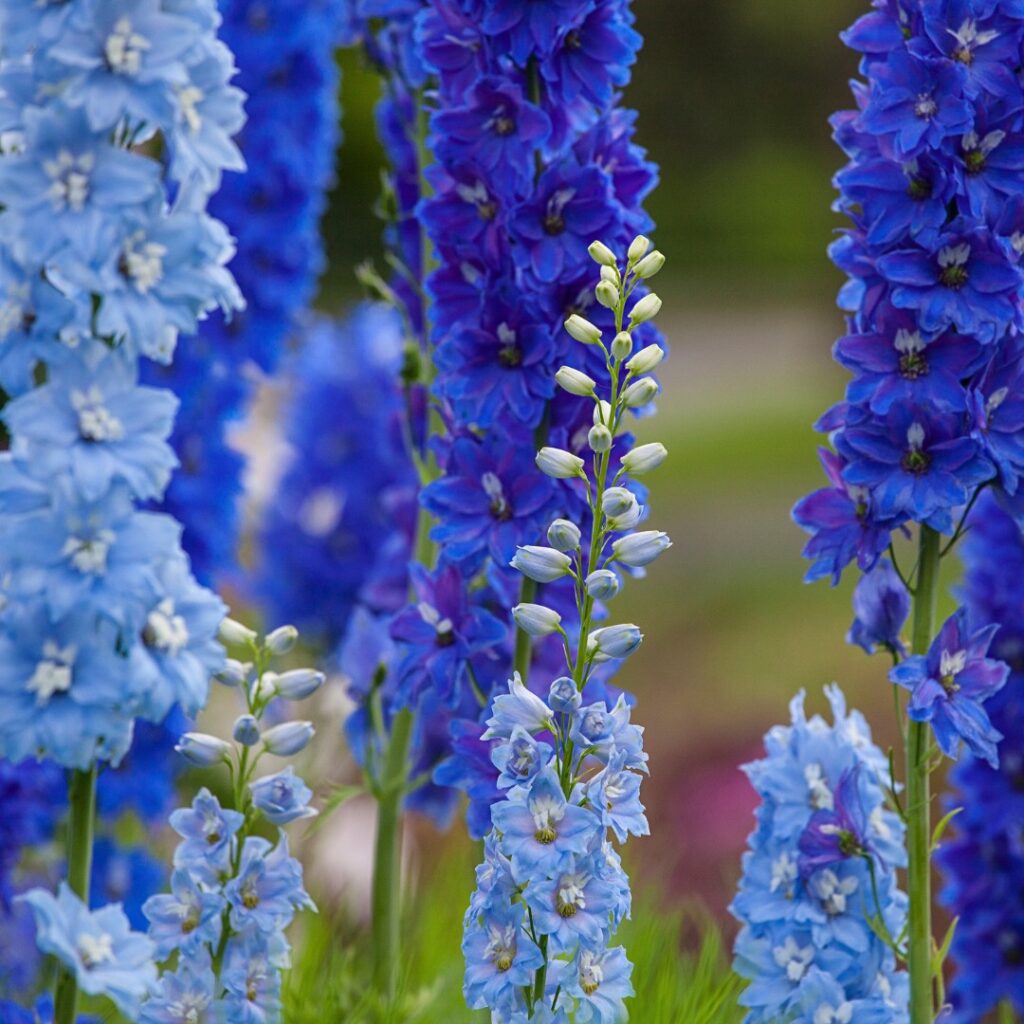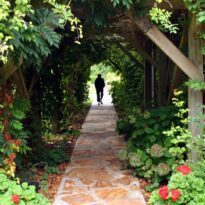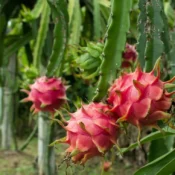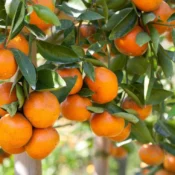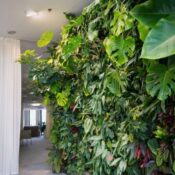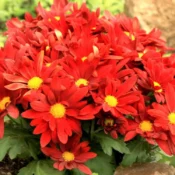Raise your hand if you’ve never been enchanted by blue flowers!
The charm of blue flowers in the world of gardening is not just about color, but about a rare beauty that captures the attention and heart of those who see them. The blue coloration in flowers is less common than other colors in the plant kingdom, which makes each species that displays this shade a precious addition to any garden. The rarity of blue flowers is due to a genetic peculiarity that limits the production of blue pigments in plants, making them unique and especially desired by gardeners and plant enthusiasts. You will notice that many plants considered blue are actually a nearly blue, very intense lilac or purple.
Let’s discover how these blue beauties not only beautify our spaces but also carry deep meanings and enrich our environments with their peculiar charm.
The Symbolism of the Color Blue
The color blue is often associated with calm, serenity, and stability. In the context of flowers, this color is particularly special due to its relative rarity in nature, which makes these flowers even more exceptional and desirable.
Historically, blue flowers have been symbols of mystery and wonder. In antiquity, they were often associated with gods and the divine, serving as offerings in rituals and sacred ceremonies. In various cultures, these flowers symbolize trust, loyalty, and wisdom. For example, in Christian iconography, the Virgin Mary is often depicted with a blue cloak, reinforcing the association of this color with heavenly virtues.

In psychological terms, blue can have a calming effect, reducing stress and promoting a sense of inner peace. Have you ever noticed how peaceful you feel looking at a garden full of blue flowers? This is one of the many reasons why blue flowers are popular choices for therapeutic gardens and meditation spaces.
Ultimately, the rarity and unique beauty of blue flowers also make them symbols of exclusivity and luxury. It’s no wonder that many landscapers and florists recommend using these flowers to create memorable environments.
When planning a garden or composing floral arrangements, blue flowers stand out as a charming and visually impactful choice. This shade, considered one of the rarest and most coveted, brings a touch of freshness and serenity to spaces. However, the beauty of blue flowers lies not only in their color. It is also in the way these flowers are combined with other plants and elements in the garden, creating stunning landscapes or arrangements that capture attention. In this article, we will explore 51 types of blue flowers that can transform your garden into a fairy-tale scene and discuss effective techniques for combining them harmoniously in different settings.
Are you ready to discover how to incorporate this rare blue beauty into your garden?
Combining Blue Flowers in the Garden or Floral Arrangements
Using the Color Wheel
The color wheel is an essential tool in landscaping and floriculture, as it helps create visually harmonious and impactful combinations. When it comes to blue flowers, you can explore various approaches, such as complementary colors, analogous colors, or monochrome. Each technique has its charm and visual effect, suiting different styles and preferences.

- Complementary Colors: Complementary colors are those directly opposite each other on the color wheel. For blue flowers, the most direct complement is orange. Imagine a flowerbed where delicate blue Nemophilas mix with vibrant California Poppies in orange. This combination not only appeals to the eye but also highlights each color, making them stand out even more.
- Analogous Colors: Analogous colors are those close to each other on the color wheel, creating a more subtle and harmonious effect. For blue flowers, shades of green and violet are excellent choices. For instance, arrangements combining blue Hydrangeas with lavenders and some green touches from Hosta or Moonlight Philodendron leaves create a calming and naturally elegant environment.
- Monochrome: Monochrome involves using different shades of the same color. In the case of blue flowers, you can play with various intensities, from pale blue to a deeper blue. An arrangement or flowerbed using different species such as Delphinium, Agapanthus, and Salvias, all in various shades of blue, offers a cohesive yet dynamic visual experience, full of depth and visual interest.
In landscaping, using blue flowers as focal points or as part of a mass planting or border can elevate the aesthetic quality of a garden. They are perfect for creating ‘tranquility points’ in flower beds or highlighting areas near water, like ponds and fountains, where their reflections intensify the natural beauty of the space. Additionally, many plants with blue flowers are known to attract pollinators, adding not only color but also biodiversity to the garden.
When planning your garden, including a variety of blue flowers is certainly a wise choice. They not only bring a touch of rare and exclusive beauty but also contribute to the creation of a more dynamic and attractive space.
Blue in Antiquity

In antiquity, blue flowers were highly valued due to the scarcity of natural blue pigments. In ancient Greece and Rome, they were associated with the deities of the sea and sky, due to their color that resembled both the ocean and the firmament. A classic example is the Hyacinth, a flower directly linked to the myth of Hyacinthus, the young lover of the god Apollo, who was tragically killed and from whose blood the flower sprang. This myth not only highlights the beauty of the flower but also associates the blue color with sadness and loyalty.
Blue Flowers in Literature and Art
In literature and the arts, blue flowers often appear as metaphors for desire, fascination, and the unattainable. One of the most famous uses of the blue flower in literature is in the German novel “Heinrich von Ofterdingen” (1802), written by Novalis, where the quest for the blue flower symbolizes the protagonist’s search for love and spiritual understanding. This work helped to cement the idea of the blue flower as a symbol of the Romantic movement in Europe.
Blue Flowers in Royal Gardens
In European royal gardens, blue flowers were often planted to symbolize nobility and sophistication. At the Palace of Versailles, for example, King Louis XIV’s garden boasted rows of Delphinium, known for their vibrant blue color, which were seen as symbols of lightness and agility, traits appreciated by the royalty.

False Blue Flowers: The Fascination and Truth Behind the Color
As we have seen earlier, blue is an exceptionally rare and desired color in the garden. However, not all “blue flowers” we find for sale are naturally this color. Some of the most popular include Phalaenopsis orchids, roses, immortelles, and chrysanthemums, which are often artificially modified to achieve this desirable shade. Let’s unveil the process behind these color transformations and understand what we are really taking home.
The Process of Artificial Coloring
The most common technique used to create artificial blue flowers is the absorption of dyes through the stems. The process is surprisingly simple yet effective. The chosen flower, such as a rose or a Phalaenopsis orchid, must initially be light-colored, often white, for the dye to be more visible. A soluble blue dye is diluted in water or placed on the substrate as a sachet to be dissolved gradually. As the plant absorbs the water to stay hydrated, it also absorbs the dye. After a few hours or days, depending on the flower, the dye is transported through the xylem to the petals, changing their color to the desired blue.
The Truth About Artificially Colored Flowers
Despite the undeniable beauty of these artificially blue flowers, it’s crucial to understand that the color you see is not natural. This means that, unlike genuinely blue flowers, these will not maintain the blue color in future blooms. The next time the plant flowers, its flowers will return to their original color, usually white.
Many consumers are enchanted by the vibrant coloring of these flowers without knowing that the color is not permanent. In fact, many people are disappointed to discover that the intense blue color was just the result of a temporary treatment. Also, be careful when falling for scams selling seeds of plants with blue flowers. Many images are currently modified to make them appear naturally blue, including those generated by Artificial Intelligence. Therefore, great discretion and attention are needed when purchasing seedlings and seeds.

51 Blue Flowers
Nature, in its wisdom, has reserved this enigmatic hue for a select variety of species, capable of transforming any garden with their authentic blue beauty. From the delicate hue of Nemophila to the deep blue of Aconites, prepare to explore an exclusive list of 51 plants that boast naturally blue flowers.
Don’t miss the opportunity to meet these natural wonders that promise to enchant and inspire gardeners and landscapers. Stay with us for this colorful journey through the purest and most stunning blue of nature:
1. Aconite (Aconitum napellus)

- Description: Intense blue helmet-shaped flowers, which earn it the common name of monk’s hood.
- Cultivation tips: Prefers partial shade and moist, well-drained soils.
- Trivia: All parts of the plant are highly toxic, historically used for medicinal purposes with extreme care.
2. Agapanthus (Agapanthus africanus)

- Description: Known as “African Lily,” it has flowers in umbels that resemble fireworks.
- Cultivation tips: Grows best in full sun or partial shade and in rich, well-drained soils.
- Trivia: Flowers are often used in floral arrangements due to their long-lasting after cutting.
3. Ajuga (Ajuga reptans)

- Description: Dense ground cover with spikes of blue flowers that appear in spring.
- Cultivation tips: Ideal for partial shade; tolerates a variety of soils, as long as they are well-drained.
- Trivia: Besides the flowers, Ajuga is valued for its attractive leaves, often tinged with bronze or variegated.
4. Anchusa (Anchusa azurea)

- Description: Bright blue flowers that are particularly attractive to bees and other pollinators.
- Cultivation tips: Grows best in full sun and in rich, well-drained soils.
- Trivia: While beautiful, the entire plant is slightly toxic if ingested.
5. Blue Anemone (Anemone coronaria)

- Description: Produces vibrant blue flowers on slender stems, popular both in gardens and as cut flowers.
- Cultivation tips: Prefers full sun or partial shade and light, fertile, well-drained soils.
- Trivia: Anemones are symbols of protection against evil and are often used in bridal bouquets.
6. Blue Columbine (Aquilegia vulgaris)

- Description: Distinctive bell-shaped flowers with long spurs, in shades of celestial blue.
- Cultivation tips: Prefers partial shade and well-drained soils.
- Trivia: Also known as “columbine,” it is the official flower of Colorado.
7. Borage (Borago officinalis)

- Description: Starry blue flowers, with hairy, textured leaves.
- Cultivation tips: Easy to grow, prefers full sun; self-seeds abundantly.
- Trivia: Flowers and leaves are edible, with a flavor similar to cucumber, popular in salads and drinks.
8. Bellflower (Campanula persicifolia)

- Description: Blue bell-shaped flowers, tall and elegant, ideal for a cottage-style garden.
- Cultivation tips: Prefers full sun or partial shade and well-drained, nutrient-rich soil.
- Trivia: Valued for its long flowering season and for attracting pollinators.
9. Blue Cornflower (Centaurea cyanus)

- Description: Known as “bachelor’s button,” has bright blue flowers with a touch of delicacy.
- Cultivation tips: Adapts to a variety of soils, but prefers sunny locations with well-drained soil.
- Trivia: Traditionally used in herbalism and as a cut flower due to its vibrant color and attractive shape.
10. Plumbago (Ceratostigma plumbaginoides)

- Description: Produces intense blue flowers in late summer, when many other flowers have withered.
- Cultivation tips: Prefers full to partial shade and well-drained soils.
- Trivia: Its leaves turn bright red in autumn, providing extended seasonal interest.
11. Chicory (Cichorium intybus)

- Description: Features vibrant blue flowers on long stems and is often found along roadways.
- Cultivation tips: Tolerates a wide range of soil conditions and is quite drought-resistant.
- Trivia: Chicory roots can be used as a coffee substitute.
12. Blue Clematis (Clematis x hybrida)

- Description: Vines that produce large, showy flowers in shades of blue.
- Cultivation tips: Prefers head in the sun and roots in the shade; needs structures to climb.
- Trivia: Can be used to cover walls, fences, or as patio plants in trellises.
13. Dayflower (Commelina erecta)

- Description: Small vibrant blue flowers with two large petals and one small, a distinctive feature of commelinas.
- Cultivation tips: Prefers locations from full sun to partial shade and well-drained soils; drought tolerant.
- Trivia: Often found in urban and rural areas, being hardy and easy to grow.
14. Larkspur (Consolida ajacis)

- Description: Blue spike-shaped flowers that are very popular in gardens for cut flowers.
- Cultivation Tips: Prefers full sun and well-drained soils; excellent for annual gardens.
- Trivia: The flowers can be used both fresh and dried in floral arrangements.
15. Delphinium (Delphinium)

- Description: Blooms on tall spikes with a range of blues from pale to intense.
- Cultivation Tips: Needs full sun and a well-drained soil; support for stems is essential.
- Trivia: Popular in cottage gardens and as a cut flower due to its stature and vibrant colors.
16. Globe Thistle (Echinops ritro)

- Description: Perennial species that produces vibrant blue, very structural and attractive flower spheres.
- Cultivation Tips: Prefers full sun and well-drained soils; drought and poor soil tolerant.
- Trivia: Its flowers are popular in dried floral arrangements and are great for attracting bees and butterflies.
17. Pride of Madeira (Echium candicans)

- Description: Large shrub with spectacular blue flower spikes that emerge in spring.
- Cultivation Tips: Ideal for coastal gardens, as it tolerates saline winds and poor soils.
- Trivia: It is endemic to Madeira, Portugal, but has become popular in temperate climates worldwide.
18. Blue Shrimp (Eranthemum pulchellum)

- Description: Ornamental shrub that produces vivid blue spike-shaped flowers during spring and summer.
- Cultivation Tips: Prefers warmer climates, full sun to partial shade, and a well-drained soil.
- Trivia: Ideal for adding color and height to tropical and subtropical gardens.
19. Toucan’s Tongue (Eryngium pristis)

- Description: Distinct silver-blue flowers with a metallic appearance and thorny leaves.
- Cultivation Tips: Enjoys full sun and dry, sandy or stony soils.
- Trivia: Appreciated for its unique texture and color in both dried and fresh floral arrangements.
20. Little Blue (Evolvulus glomeratus)

- Description: Small sky-blue flowers that cover the plant during the summer.
- Cultivation Tips: Prefers full sun and well-drained soil; heat and drought tolerant.
- Trivia: Ideal for low beds, borders, or as ground cover due to its compact growth habit.
21. Gentian (Gentiana acaulis)

- Description: Deep blue trumpet-shaped flowers.
- Cultivation Tips: Ideal for rock gardens; prefers acidic, moist soils.
- Trivia: Highly appreciated in alpine gardens for its intense color and distinctive shape.
22. Wild Hyacinth (Hyacinthoides non-scripta)

- Description: Known for forming enchanting blue carpets in woods during the spring.
- Cultivation Tips: Prefers partial shade and moist soil, rich in organic matter.
- Trivia: Strongly associated with English tradition, it is an iconic sight in woods during spring.
23. Hyacinth (Hyacinthus orientalis)

- Description: Dense spikes of fragrant flowers in vibrant blue.
- Cultivation Tips: Plant bulbs in the fall for spring blooming; prefers full sun or partial shade.
- Trivia: Hyacinths are traditionally associated with constancy and beauty, often used in festivals and celebrations.
24. Blue Hydrangea (Hydrangea macrophylla)

- Description: Large inflorescences that can vary in color with the soil pH.
- Cultivation Tips: The blue color can be intensified by treating the soil with aluminum sulfate to increase acidity.
- Trivia: Widely used in floral arrangements due to the size and beauty of its flowers.
25. Siberian Iris (Iris sibirica)

- Description: Elegant flowers with three large blue or blue-violet petals.
- Cultivation Tips: Adapts well to moist soils and even waterlogged conditions; full sun to partial shade.
- Trivia: Popular in floral arrangements and pond borders due to its moisture tolerance.
26. Sky Blue (Jacquemontia pentanthos)

- Description: Delicate climbing plant with small sky-blue flowers that open in the sun.
- Cultivation Tips: Prefers full sun and a support to climb, such as trellises or grids.
- Trivia: It is an excellent choice for vertical gardens or covering structures, adding a screen of vivid color.
27. Flax (Linum perenne)

- Description: Produces delicate blue flowers that last only a day.
- Cultivation Tips: Prefers full sun and well-drained soils; drought tolerant.
- Trivia: The fibers of flax are used to produce linen, a natural fabric.
28. Lobelia (Lobelia erinus)

- Description: Small bright blue flowers that form a dense mass of color.
- Cultivation Tips: Excellent for edges and containers; likes full sun and well-drained soils.
- Trivia: Widely used in flower beds and container gardens for its visual impact and ease of cultivation.
29. Scabiosa (Lomelosia caucasica)

- Description: Produces blue cushion-shaped flowers on long stems, perfect for cut flowers.
- Cultivation Tips: Grows best in full sun with well-drained soils.
- Trivia: Also known as “pincushion flower” due to its distinctive shape.
30. Meconopsis (Meconopsis betonicifolia)

- Description: Known as the “Blue Poppy of the Himalayas,” it features a vibrant and rare blue hue.
- Cultivation Tips: Prefers moist, well-drained soils and a partially shaded environment. Cool climate is ideal.
- Trivia: It is one of the few truly blue flowers and is native to the alpine regions of Tibet.
31. Grape Hyacinth (Muscari armeniacum)

- Description: Produces dense clusters of small blue flowers that resemble bunches of grapes.
- Cultivation Tips: Ideal for mass planting under trees or along edges; prefers full sun to partial shade.
- Trivia: The flowers are known for their sweet aroma and are popular in spring flower arrangements.
32. Forget-me-not (Myosotis sylvatica)

- Description: Small blue flowers with a yellow center, known as “forget-me-nots.”
- Cultivation Tips: Grows in rich organic, well-drained, moist soils, and in partial shade.
- Trivia: Symbolizes true love and memory, often used in romantic themes in gardens.
33. Baby Blue Eyes (Nemophila menziesii)

- Description: Small deep blue flowers with white centers, ideal for edging or as ground cover.
- Cultivation Tips: Prefers locations with partial shade and well-drained soils; excellent for cooler climates.
- Trivia: Widely grown in California, its native land, this plant is famous for its abundance of flowers under ideal conditions.
34. False Iris (Neomarica caerulea)

- Description: Produces large, attractive blue-purple flowers, similar to iris flowers.
- Cultivation Tips: Adapts well to partial shade or full sun in cooler regions; prefers moist, well-drained soils.
- Trivia: Known for easy propagation, making it popular for filling large areas in gardens.
35. Ornamental Catnip (Nepeta faassenii)

- Description: Known for its blue-lavender flowers and attracting cats, who love the fragrance of the leaves.
- Cultivation Tips: Prefers full sun and well-drained soils; very drought tolerant.
- Trivia: An excellent choice for gardens requiring low-maintenance plants.
36. Love-in-a-mist (Nigella damascena)

- Description: Also known as “love-in-a-mist,” it has delicate blue flowers and fine, lacey foliage.
- Cultivation Tips: Likes full sun and well-drained soils; easy to self-sow.
- Trivia: The seeds are used as a spice and have a flavor similar to nutmeg.
37. Omphalodes (Omphalodes cappadocica)

- Description: Known as “blue eyes,” it produces delicate blue flowers in spring.
- Cultivation Tips: Prefers partial shade and moist, well-drained soils.
- Trivia: Ideal for shaded areas of the garden, where other blue flowers may not thrive.
38. Blue Petunia (Petunia x hybrida)

- Description: One of the few truly blue petunias, with vibrant, attractive flowers.
- Cultivation Tips: Prefers full sun and well-drained soil; requires regular fertilization during the growing season.
- Trivia: Very popular in hanging baskets and containers due to its prolific and cascading growth habit.
39. Chinese Bellflower (Platycodon grandiflorus)

- Description: Known for its large balloon-shaped flowers that open into vibrant blue stars.
- Cultivation Tips: Prefers full to partial shade and rich, well-drained soil.
- Trivia: The root of this plant is used in traditional Asian medicine to treat various ailments.
40. Cape Leadwort (Plumbago auriculata)

- Description: Known for its sky-blue flowers, this climbing plant is excellent for covering walls and fences.
- Cultivation Tips: Adapts well to full sun or partial shade and prefers well-drained soils.
- Trivia: In addition to its ornamental beauty, it is often used to attract butterflies and bees.
41. Lungwort (Pulmonaria obscura)

- Description: This perennial plant has flowers that start pink and gradually change to a luminous blue.
- Cultivation Tips: Ideal for partial shade and moist, rich organic soils.
- Trivia: Valued not only for its flowers but also for its decorative spotted leaves.
42. Butterfly Flower (Rotheca myricoides)

- Description: Tropical shrub with unique flowers that resemble blue and purple-blue butterflies.
- Cultivation Tips: Prefers warmer climates, full sun, and moist, well-drained soil.
- Trivia: The flowers are exceptionally attractive and can be used to create a focal point in tropical gardens.
43. Blue Ruellia (Ruellia sp)

- Description: Intense blue tubular flowers, which appear abundantly throughout the summer.
- Cultivation Tips: Adapts to a wide range of conditions, but prefers full sun and well-drained soil.
- Trivia: A popular choice for gardeners who want continuous blooming with low maintenance.
44. Blue Sage (Salvia farinacea)

- Description: Vibrant blue flowers that appear on erect spikes.
- Cultivation Tips: The plant prefers full sun and well-drained soils; drought tolerant.
- Trivia: Attracts pollinators like bees and butterflies, making it great for sustainable gardens.
45. Portuguese Squill (Scilla peruviana)

- Description: Produces a rosette of intense blue flowers in a cone shape.
- Cultivation Tips: Prefers full sun to partial shade and well-drained soils.
- Trivia: Despite its name, it is not native to Peru, but rather to the Mediterranean region.
46. Blue Potato Bush (Solanum rantonnetii)

- Description: Perennial shrub with blue-violet flowers and a bright yellow center.
- Cultivation Tips: Prefers full sun and well-drained soils; requires regular pruning to maintain shape.
- Curiosities: Its berries are decorative but toxic, and should not be ingested.
47. Blue African Violet (Saintpaulia ionantha)

- Description: Small blue flowers that bloom consistently above the velvety foliage.
- Cultivation Tips: Ideal for indoor growing; prefers indirect light and high humidity.
- Curiosities: There are many hybrid varieties with different shades of blue, making them favorites among collectors.
48. Blue Danube (Stokesia laevis)

- Description: Perennial with large lavender-blue flowers that resemble aster flowers.
- Cultivation Tips: Prefers full sun and well-drained soil; drought-tolerant once established.
- Curiosities: Very popular in butterfly gardens due to its appeal to pollinators and its long blooming season.
49. Thunbergia (Thunbergia grandiflora)

- Description: Robust climber with large blue trumpet-shaped flowers.
- Cultivation Tips: Needs support to climb; prefers full sun or partial shade and well-drained soil.
- Curiosities: The flowers attract bees and butterflies, and are ideal for pergolas and trellises.
50. Veronica (Veronica spicata)

- Description: Erect spikes of small blue flowers.
- Cultivation Tips: Thrives in full sun and well-drained soil.
- Curiosities: Excellent for attracting butterflies and bees, and popular in rock gardens and borders.
51. Blue Pansy (Viola x wittrockiana)

- Description: Distinctive flowers with three lower blue petals and a wide variety of bicolor or tricolor patterns.
- Cultivation Tips: Prefers full sun to partial shade and rich, moist soil.
- Curiosities: Popular in gardens due to their ability to bloom even in cooler conditions.
As we explore the mysterious world of blue flowers, it becomes evident that these beauties are not just a visual delight but also carry a symbolic and historical depth that can transform any space. From the majestic gardens of Versailles to modest residential flower beds, blue flowers have the power to create environments that capture the eyes and soothe the soul.
We hope you have been inspired to add a touch of blue to your garden or floral arrangements. Whether it’s the tranquility that the color blue evokes, the sophistication it brings to spaces, or simply the pleasure of cultivating something so uniquely beautiful, blue flowers are sure to enrich your gardening experience.
How about starting to plan your own blue oasis? Try introducing some of the 51 wonderful blue flowers we have presented, and watch your garden transform into a spectacle of color. So, are you ready to dive into the blue and add a touch of serenity to your garden? Start today and let the beauty of blue flowers inspire your next landscaping project!

